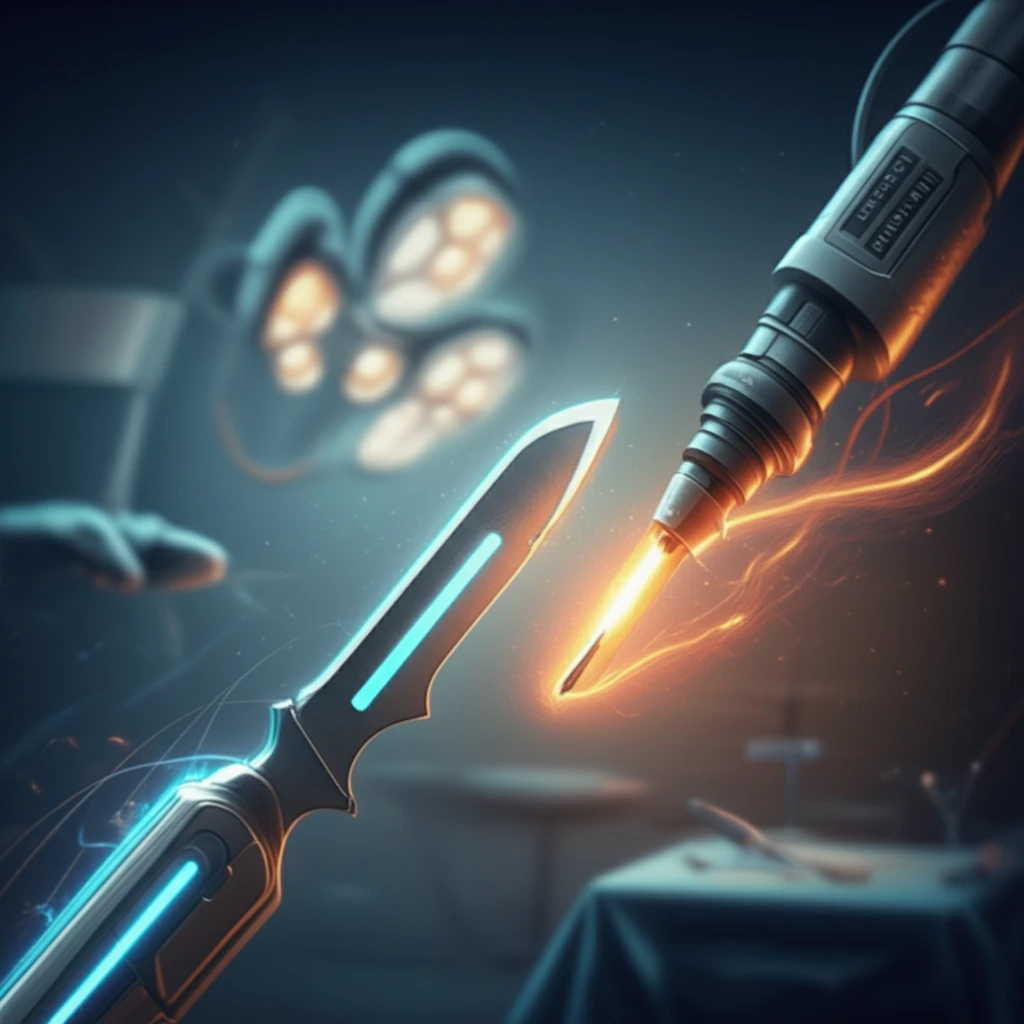
Scalpel vs. Electrocautery: Which Blade Reigns Supreme for Skin Incisions?
"A head-to-head comparison of scalpel and electrocautery techniques in orthopedic surgery reveals surprising insights into healing, speed, and safety."
For generations, the scalpel has been the go-to instrument for making skin incisions. However, electrocautery, a more recent innovation, has emerged as a potential alternative. While some surgeons worry that electrocautery might increase infection risk or impair healing, recent research suggests it could offer benefits such as reduced blood loss and faster incision times.
A key question remains: is electrocautery a safe and effective substitute for the scalpel in skin incisions during orthopedic surgeries? One study directly compared the two methods to find out.
This article breaks down the findings of a prospective study conducted at a tertiary care center, where researchers compared electrocautery incisions with conventional scalpel incisions in patients undergoing orthopedic surgeries with internal implants. We'll explore the impact on healing, complications, and speed, providing a clearer picture of which blade might be best.
Electrocautery vs. Scalpel: A Close Examination of Skin Incision Techniques

The study, conducted at the Department of Orthopaedics, BPKIHS, Dharan, Nepal, focused on patients with closed forearm fractures requiring surgery. Each patient's incision was strategically divided: the proximal half was opened using a traditional steel scalpel, while the distal half was opened with an electrocautery blade. This innovative approach allowed for a direct, side-by-side comparison within the same patient.
- Incision time
- Postoperative wound complication rates
- Color and viability of the skin
- Presence of charring
- Dermal peeling
- Scar tenderness
- Hypertrophy or keloid formation
- Wound dehiscence
The Verdict: Is Electrocautery Ready to Replace the Scalpel?
The study revealed that forearm skin incisions made with electrocautery were significantly faster than those made with a scalpel (p<0.05). However, postoperative wound complication rates did not differ significantly between the two groups (p>0.05).
The researchers concluded that there is no significant difference in the healing of skin incisions made by electrocautery compared to those made by scalpel in orthopedic surgeries using internal implants. This suggests that electrocautery can be a safe and efficient alternative for skin incisions in these procedures.
While the study provides valuable insights, it's important to note that it focused specifically on closed forearm fractures. Further research may be needed to determine the applicability of these findings to other types of orthopedic surgeries and patient populations. However, for surgeons seeking a faster incision method without compromising safety, electrocautery appears to be a viable option.
